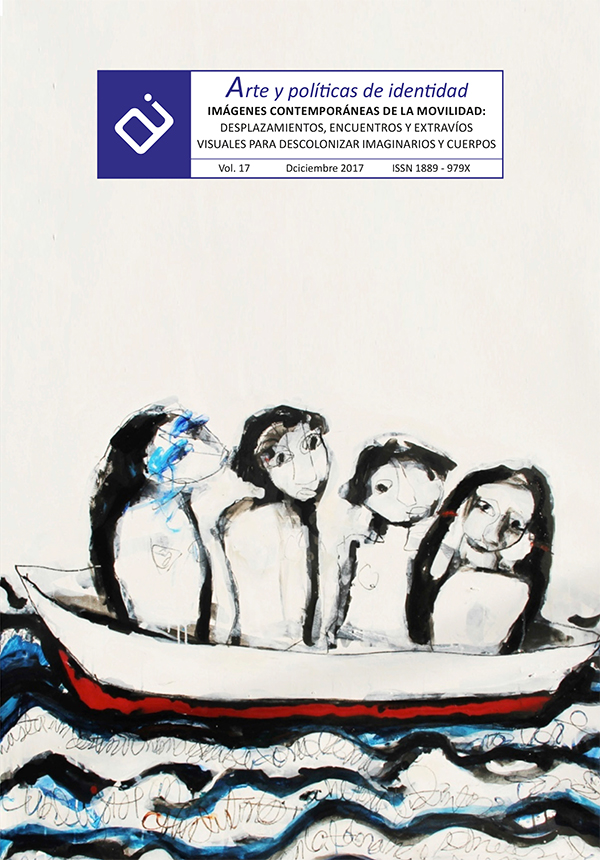The tainted stories of Pedro Lemebel and Reinaldo Arenas
between “mariconaje guerrero” and new “sidentidades”
Abstract
At the end of the last century, at the height of the health emergency due to the AIDS pandemic, numerous artistic, literary and cinematographic works have been produced about this subject. Before night fall of the Cuban Reinaldo Arenas and Loco Afán: crónicas del sidario of the Chilean Pedro Lemebel are placed within this general tendency, contributing in the international debate with an original perspective, because of their Latin American and interectional identities that, in fact, had to face personally with the North American context, very different than theirs. Both texts develop a perspective between erotography and tanatography, between life, fueled by sex and death, related to the calvary of the disease. But AIDS did not only influence the arts but, above all, identities, leading the subjects involved to think of new ways of relating in and out of the LGBTIQ (Lesbians, Gays, Bisexuals, Trans, Intersexuals, Queers) community. Ricardo Llamas called them Sidentidades.
Downloads
-
Abstract516
-
PDF (Español (España))528
References
Archivo online New York times, 1981-1987, s.p. https://partners.nytimes.com/library/national/science/AIDS/timeline80-87.html
Angvik, B. (1995). Bio-grafías y tanato-grafías: estrategias teóricas en torno a la presencia del sida en la literatura contemporánea, ACTAS II, AIH, Fondo virtual Cervantes. http://cvc.cervantes.es/literatura/aih/pdf/12/aih_12_6_007.pdf
Angvik, B. (2006). Arenas, Sarduy: sida y tanatografia en D. Ingenschay (Ed.), Desde aceras opuestas: Literatura/cultura gay y lesbiana en Latinoamerica, Madrid/Frankfurt: Vervuert-Iberoamericana.
Arboleda Ríos, P. (2011). ¿Ser o estar “queer” en Latinoamérica? El devenir emancipador en: Lemebel, Perlongher y Arenas, Iconos: Revista de ciencias sociales, 39, 111-122.
Arenas, R. (2000). Antes que anochezca, Barcelona: Tusquets.
Barthes, R. (1982). El placer del texto, México: El siglo XXI.
Blanco, F., Poblete J. (Ed). (2010)Desdén al infortunio. Sujeto, comunicación y público en la narrativa de Pedro Lemebel, Santiago de Chile: Editorial Cuarto Propio.
Conrad, P. (2012). Medicalization and Social Control, Annual Review of Sociology, 18. http://www.annualreviews.org/doi/abs/10.1146/annurev.so.18.080192.001233
Danius, S., Jonsson S., Spivak G. C. (1993). An Interview with Gayatri Chakravorty Spivak, Boundary, 2, 20, 24-50. http://www.jstor.org/stable/303357
Espinosa Mendoza, N. (2017). Herman@s de Lemebel: otros regresos a la Habana, Latin American Literature Today, 2, s.p. http://www.latinamericanliteraturetoday.org/es/2017/april/hermans-de-lemebel-otros-regresos-la-habana-de-norge-espinosa
Ferguson, A. (1989). Blood at the Root: Motherhood, Sexuality and Male Dominance, London: Pandora eds.
Foster, D. W. (2006). El gay como modelo cultural: eminent maricones de Jaime Manrique en D. Ingenschay, Desde aceras opuestas: literatura/cultura gay y lesbiana en latinoamerica, Madrid: Iberoamerica.
Franco, J. (2003). Decadencia y caída de la ciudad letrada, Madrid: Editorial Debate.
Hall, S. (1996). Questions of Cultural Identity, London: Sage eds.
Ingenschay, D. (2006). Desde aceras opuestas: literatura/cultura gay y lesbiana en latinoamerica, Madrid: Iberoamerica.
Landau, E. (2011). HIV in the ‘80s: ‘People didn’t want to kiss you on the cheek, CNN, s.p.. http://edition.cnn.com/2011/HEALTH/05/25/edmund.white.hiv.AIDS/
Leavitt, D. (1998). La nuova generazione perduta, Milano: Mondadori.
Lemebel, P. (1996). Loco Afan: crónicas de sidario, Santiago de Chile: Lom ediciones.Llamas, R. (1995). Construyendo sidentidades: estudios desde el corazón de la pandemia, México-España: Siglo veintiuno editores.
Mateo Del Pino, Á. (2010). Inestable equilibrio: entre el deseo y la muerte. El mismo, el mismo loco afán...», en F. Blanco, Fernando, J. Poblete (Ed.). Desdén al infortunio. Sujeto, comunicación y público en la narrativa de Pedro Lemebel, Santiago de Chile: Editorial Cuarto Propio, 2010.
Palarversich, D. (2010). El cuerpo agredido de la homosexualidad proletaria y Loco Afán de Pedro Lemebel en F. Blanco, J. Poblete (Ed.). Desdén al infortunio. Sujeto, comunicación y público en la narrativa de Pedro Lemebel, Santiago de Chile: Editorial Cuarto Propio.
Perlongher, N. (1997). Prosa plebeya: ensayos 1980-1992, Buenos Aires: Ediciones Colihue.
Pujado, J. (2000). Los regios del Santa Lucía, Barcelona: Laertes.Sánchez, M. M. (2008). Reinaldo Arenas: El exilio y el SIDA escritos sobre un cuerpo, Revista de estudios literarios, Universidad Complutense Madrid, 39, s.p. https://pendientedemigracion.ucm.es/info/especulo/numero39/rarenas.html
Sandel, M. (1982). Liberalism and the Limits of Justice, Cambridge: Cambridge Press.
Soler, J. (1976). Entrevista a Severo Sarduy, A fondo, TVE. https://www.youtube.com/watch?v=_12rFRFX1Is
Sontag, S. (1989), AIDS and its Metaphor, New York: Straus & Giroux. Sneathen, E. (2015). In our lives, America’s Aids magazine, s.p. http://aumag.org/2015/02/06/joseph-beam/
Treichler, P. A. (1991). AIDS, Homophobia and Biomedical Discourse, en Crimp D. (Ed.), AIDS, Cultural analysis, cultural activism, Cambridge: Mit Press. http://www.penelopeironstone.com/Treichlersignification.pdf
Vargas, M. (1986). Las novelas de los contemporáneos como textos de goce, Hispania, 69, s.p.
Works published in this journal are subject to the following terms:
- The Service of Publications from the University of Murcia (publishing house) keeps the published works’ copyrights, and favors and allows the reuse of these works under the license indicated in point 2.
- Works are published in the journal’s online edition under the license Creative Commons Reconocimiento-NoComercial-SinObraDerivada 3.0 España(texto legal). They can be copied, used, disseminated, transmitted and publicly exhibited, as long as: i) the author and original source of publication are cited (journal, publishing house and work’s URL); ii) they are not used for commercial purposes; iii) the existence and specifications of this license are mentioned.
3. Conditions for auto-file. It is allowed and encouraged that authors share electronically their pre-print version (the pre-reviewed version) and /or post-print version (the reviewed and accepted version) of their Works before the publication, since it promotes its circulation and dissemination. RoMEO color: green.










